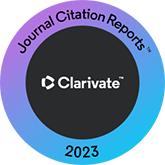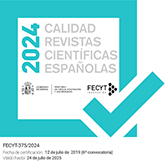Acúfenos: mecanismos, medidas y tratamientos sonoros
DOI:
https://doi.org/10.3989/loquens.2015.024Palabras clave:
Pérdidas Auditivas, acúfenos, terapias sonorasResumen
El acúfeno consiste en la percepción de un sonido fantasma (un zumbido continuo dentro de la cabeza), sin una fuente externa que lo produzca. Para apreciar la importancia del tema hay que tener en cuenta que aproximadamente un 1-2 % de la población padece de acúfeno severo, y que a día de hoy no existe ninguna medicina que lo cure. Todavía no se conoce el origen exacto del acúfeno, aunque se supone que se produce por un mecanismo de compensación homeostático del sistema auditivo central ante una pérdida auditiva periférica (plasticidad cerebral). Las terapias acústicas pretenden revertir esta plasticidad cerebral estimulando el sistema auditivo con un sonido apropiado para reducir la molestia del acúfeno. En este artículo se revisan varias terapias acústicas y se concluye que la más apropiada consiste en una secuencia de tonos gamma de frecuencia aleatoria dentro de la banda de audio, con amplitud proporcional a su pérdida auditiva a esa frecuencia (un Ambiente Acústico Enriquecido). Por tanto, para su diseño se requiere la curva de pérdidas (HL) del paciente en cada uno de los oídos.
Descargas
Citas
Chang, J. E., & Zeng, F?G. (2012). Tinnitus suppression by electric stimulation of the auditory nerve. Frontiers in System Neuroscience, 6, 1–11. http://dx.doi.org/10.3389/fnsys.2012.00019 PMid:22479238 PMCid:PMC3315113
Das, S. K., Wineland, A., Kallogjeri, D., & Piccirillo, J. F. (2012). Cognitive speed as an objective measure of tinnitus. Laryngoscope, 122(11), 2533–2538. http://dx.doi.org/10.1002/lary.23555 PMid:23108884 PMCid:PMC3500665
Davis, P. B., Paki, B., & Hanley, P. J. (2007). Neuromonics tinnitus treatment: Third clinical trial. Ear & Hearing, 28(2), 242–259. http://dx.doi.org/10.1097/AUD.0b013e3180312619 PMid:17496674
Dehmel, S., Eisinger, D., & Shore, S. E. (2012). Gap prepulse inhibition and auditory brainstem-evoked potentials as objective measures for tinnitus in guinea pigs. Frontiers in Systems Neuroscience, 6, 1–15. http://dx.doi.org/10.3389/fnsys.2012.00042 PMid:22666193 PMCid:PMC3364697
Dobie, R. A. (1999). A review of randomized clinical trials in tinnitus. Laryngoscope, 109, 1202–1211. http://dx.doi.org/10.1097/00005537-199908000-00004 PMid:10443820
Eggermont, J. J. (2012). The neuroscience of tinnitus. Oxford (UK): Oxford University Press. http://dx.doi.org/10.1093/acprof:oso/9780199605606.001.0001
Eggermont, J. J., & Roberts, L. E. (2004). The neuroscience of tinnitus. Trends in Neurosciences, 27(11), 676–682. http://dx.doi.org/10.1016/j.tins.2004.08.010 PMid:15474168
Flor, H., Hoffmann, D., Struve, M., & Diesch, E. (2004). Auditory discrimination training for the treatment of tinnitus. Applied Psychophysiology and Biofeedback, 29, 113–120. http://dx.doi.org/10.1023/B:APBI.0000026637.77671.f4
Formby, C., Sherlock, L. P., & Gold, S. L. (2003). Adaptive plasticity of loudness induced by chronic attenuation and enhancement of the acoustic background. Journal of the Acoustical Society of America, 114, 55–58. http://dx.doi.org/10.1121/1.1582860
Hall, D. A., Haider, H. Kikidis, D., Mielczarek, M., Mazurek, B., Szczepek, A. J., & Cederroth, C. R. (2015). Toward a global consensus on outcome measures for clinical trials in tinnitus. Trends in Amplification, 19, 1–7.
Herraiz, C., Diges, I., & Cobo, P. (2007). Auditory discrimination therapy (ADT) for tinnitus management. Progress in Brain Research, 166, 467–471. http://dx.doi.org/10.1016/S0079-6123(07)66045-2
Herraiz, C., Diges, I., Cobo, P., & Aparicio, J. M. (2009). Cortical reorganisation and tinnitus: Principles of auditory discrimination therapy for tinnitus management. European Archives of Otorhinolaryngology, 266, 9–16. http://dx.doi.org/10.1007/s00405-008-0757-y PMid:18587591
Herraiz, C., Diges, I., Cobo, P., Aparicio, J. M., & Toledano, A. (2010). Auditory discrimination training for tinnitus treatment: The effect of different paradigms. European Archives of Otorhinolaryngology, 267(7), 1067–1074. http://dx.doi.org/10.1007/s00405-009-1182-6 PMid:20044759
Herraiz, C., Diges, I., Cobo, P., Nore-a, A., Hernández, J., & Aparicio, J. M. (2011). Enriched acoustic environment with spectrum matched to the patient hearing loss curve for tinnitus sound therapy. International Tinnitus Seminar, March 16–19, Florianópolis (Brazil). PMCid:PMC3363187
Herraiz C., Diges I., Cobo P., Plaza G., & Aparicio, J. M. (2006). Auditory discrimination therapy (ADT) for the tinnitus management: Preliminary results. Acta Otolaryngologica, 126(Suppl. 556), 80–83. http://dx.doi.org/10.1080/03655230600895614 PMid:17114148
Holm, A. F., Staal, M. J., Mooij, J. J. A., & Albers, F. W. J. (2005). Neurostimulation as a new treatment for severe tinnitus: A pilot study. Otology & Neurotology, 26(3), 425–428. http://dx.doi.org/10.1097/01.mao.0000169784.15083.61
Irino, T., & Patterson, R. D. (1997). A time-domain, level-independent auditory filter: The gammachirp. Journal of the Acoustical Society of America, 101, 412–419. http://dx.doi.org/10.1121/1.417975
Jastreboff, P. J., & Jastreboff, M. M. (2000). Tinnitus Retraining Therapy (TRT) as a method for treatment of tinnitus and hyperacusis patients. Journal of the American Academy of Audiology, 11(3): 162–177. PMid:10755812
Katsiamis, A. G., Drakakis, E. M., & Lyon, R. F. (2007). Practical gammatone-like filters for auditory processing. EURASIP. Journal on Audio, Speech, and Music Processing, Article ID 63685. http://dx.doi.org/10.1155/2007/63685
Kleine Punte, A., Meeus, O., & Van de Heyning, P. (2011). Cochlear implants and tinnitus. In A.G. Møller, B. Langguth, D. DeRidder & T. Kleinjung, Textbook of tinnitus (pp. 619–624). Springer Science + Business Media. http://dx.doi.org/10.1007/978-1-60761-145-5_77 http://dx.doi.org/10.1007/978-1-60761-145-5_77
Kleinjung, T., Steffens, T., Struz, J., & Langguth, B. (2009). Curing tinnitus with a Cochlear Implant in a patient with unilateral sudden deafness: A case report. Cases Journal, 2, 7462–4. http://dx.doi.org/10.1186/1757-1626-2-7462 PMid:19829970 PMCid:PMC2740131
Knipper, M., Van Dijk, P., Nunes, I., Rüttiger, L., & Zimmermann, U. (2013). Advances in the neurobiology of hearing disorders: Recent developments regarding the basis of tinnitus and hyperacusis. Progress in Neurobiology, 111, 17–33. http://dx.doi.org/10.1016/j.pneurobio.2013.08.002 PMid:24012803
Langguth, B., Goodey, R., Azevedo, A., Bjorne, A., Cacace, A., Croccceti, A., . . . & Vergara, R. (2007). Consensus for tinnitus patient assessment and treatment outcome measurement: Tinnitus Research Initiative meeting, Regensburg, July 2006. Progress in Brain Research, 166, 525–536. http://dx.doi.org/10.1016/S0079-6123(07)66050-6
Langguth, B., Searchfield, G. D., Biesinger, B., & Greimel, K. V. (2011). History and questionnaries. In A.G. Møller, B. Langguth, D. DeRidder & T. Kleinjung, Textbook of tinnitus (pp. 387–404). Springer Science + Business Media.
Lenhardt, M.L. (2004). Tinnitus devices. Retrieved from http:// www.tinnitus.vcu.edu/Pages/Tinnitus%20Devices.pdf
Lipman, R. I., & Lipman, S. P. (2007). Phase-shift treatment for predominant tone tinnitus. Otolaryngology–Head and Neck Surgery, 136(5), 763–768. http://dx.doi.org/10.1016/j.otohns.2006.10.046 PMid:17478212
Lyon, R. F. (1997). All-pole models of auditory filtering. In E.R. Lewis et al., Diversity in auditory mechanics (pp. 205–211). Singapore: World Scientific. PMid:9279652
Meikle, M. B., Stewart, B. J., Griest, S. E., & Henry, J. A. (2008). Tinnitus outcomes assessment. Trends in Hearing, 12(3), 223–235. http://dx.doi.org/10.1177/1084713808319943
Nore-a, A. J., & Chery-Croze, S. (2007). Enriched acoustic environment rescales auditory sensitivity. NeuroReport, 18(12), 1251–1255. http://dx.doi.org/10.1097/WNR.0b013e3282202c35 PMid:17632277
Nore-a, A. J., & Eggermont, J. J. (2005). Enriched acoustic environment alter noise trauma reduces hearing loss and prevents cortical map reorganization. Journal of Neuroscience, 25(3), 699–705. http://dx.doi.org/10.1523/JNEUROSCI.2226-04.2005 PMid:15659607
Patterson, R. D. (1994). The sound of a sinusoid: Spectral models. Journal of the Acoustical Society of America, 96, 1409–1418. http://dx.doi.org/10.1121/1.410285
Roberts, L. E., Bosnyak, D. J., Bruce, I. C., Gander, P. E., & Paul, B. T. (2015). Evidence for differential modulation of primary and nonprimary auditory cortex by forward masking in tinnitus. Hearing Research, 327, 9–27. http://dx.doi.org/10.1016/j.heares.2015.04.011 PMid:25937134
Rubinstein, J. T., Tyler, R. S., Johnson, A., & Brown, C. J. (2003). Electrical suppression of tinnitus with high-rate pulse trains. Otology & Neurolology, 24(3): 478–485. http://dx.doi.org/10.1097/00129492-200305000-00021 PMid:12806303
Schaette, R., & Kempter, R. (2006). Development of tinnitus-related neuronal hyperactivity through homeostatic plasticity after hearing loss: A computational model. European Journal of Neuroscience, 23(11), 3124–3138. http://dx.doi.org/10.1111/j.1460-9568.2006.04774.x PMid:16820003
Schaette, R., & Kempter, R. (2008). Development of hyperactivity after hearing loss in a computational model of the dorsal cochlear nucleus depends on neuron response type. Hearing Research, 240(1–2), 57–72. http://dx.doi.org/10.1016/j.heares.2008.02.006 PMid:18396381
Sedley, W., Gander, P. E., Kumar, S, Oya, H., Kovach, C. K., Nourski, K. V., . . . & Griffiths, T. D. (2015). Intracranial mapping of a cortical tinnitus system using residual inhibition. Current Biology, 25(9), 1208–1214. http://dx.doi.org/10.1016/j.cub.2015.02.075 PMid:25913402 PMCid:PMC4425458
Slaney, M. (1993). An efficient implementation of the Patterson– Holdsworth auditory filter bank (Technical Report No. 35). Apple Computer Inc.
Soleymani, T., Pieton, D., Pezeshkian, P., Miller, P., Gorgulho, A. A., Pouratian, N., & De Salles, A. A. (2011). Surgical approaches to tinnitus treatment: A review and novel approaches. Surgical Neurology International, 2, 154. http://dx.doi.org/10.4103/2152-7806.86834 PMid:22140639 PMCid:PMC3228384
Tyler, R. S., Keiner, A. J., Walker, K., Deshpande, A. K., Witt, S., Killian, . . . & Gantz, B. (2015). A series of case studies of tinnitus suppression with mixed background stimuli in a cochlear implant. American Journal of Audiology, 24, 398–410. http://dx.doi.org/10.1044/2015_AJA-15-0005 PMid:26001407
Van de Heyning, P., Meeus, O., Blaivie, C., Vermeire, K., Boudewyns, A., & De Ridder, D. (2007). Tinnitus: A multidisciplinary clinical approach. B-ENT, 3(Suppl. 7), 3–10. PMid:18225603
Vermeire, K., Heyndrickx, K., De Ridder, D., & Van de Heyning, P. (2007). Phase-shift tinnitus treatment: An open prospective clinical trial. B-ENT, 3(Supp. 7), 65–69. PMid:18225610
Vio, M. M., & Holme, R. H. (2005). Hearing loss and tinnitus: 250 million people and a US$10 billion potential market. Drugs Discovery Today, 10(19). 1263–1265. http://dx.doi.org/10.1016/S1359-6446(05)03594-4
Zeng, F. G., Tang, Q., Dimitrijevic, A., Starr, A., Larki, J., & Blevins, N. H. (2011). Tinnitus suppression by low-rate electric stimulation and its electrophysiological mechanisms. Hearing Research, 277(1–2), 61–66. http://dx.doi.org/10.1016/j.heares.2011.03.010 PMid:21447376 PMCid:PMC3137665
Zhang, J. (2013). Auditory cortex stimulation to suppress tinnitus: Mechanisms and strategies. Hearing Research, 295, 38–57. http://dx.doi.org/10.1016/j.heares.2012.05.007 PMid:22683861
Publicado
Cómo citar
Número
Sección
Licencia
Derechos de autor 2015 Consejo Superior de Investigaciones Científicas (CSIC)

Esta obra está bajo una licencia internacional Creative Commons Atribución 4.0.
© CSIC. Los originales publicados en las ediciones impresa y electrónica de esta Revista son propiedad del Consejo Superior de Investigaciones Científicas, siendo necesario citar la procedencia en cualquier reproducción parcial o total.
Salvo indicación contraria, todos los contenidos de la edición electrónica se distribuyen bajo una licencia de uso y distribución “Creative Commons Reconocimiento 4.0 Internacional ” (CC BY 4.0). Consulte la versión informativa y el texto legal de la licencia. Esta circunstancia ha de hacerse constar expresamente de esta forma cuando sea necesario.
No se autoriza el depósito en repositorios, páginas web personales o similares de cualquier otra versión distinta a la publicada por el editor.














